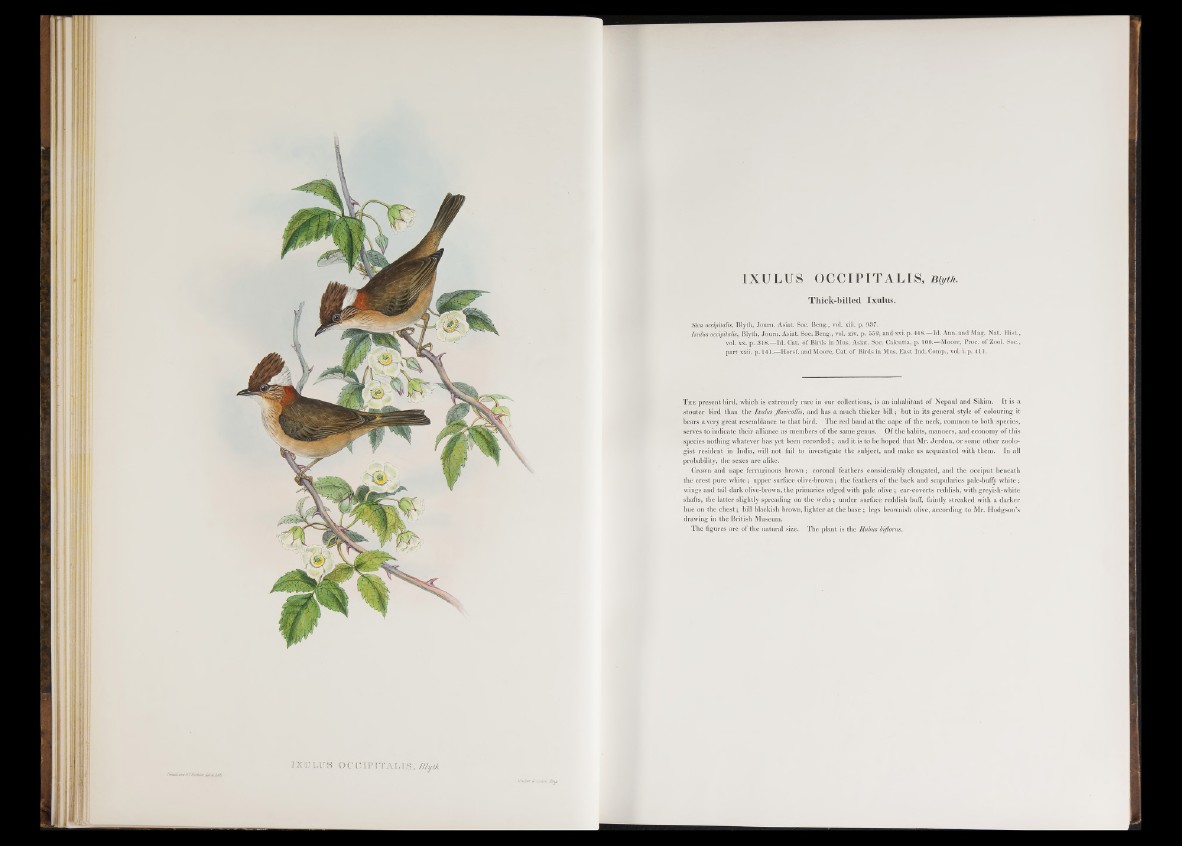
IXULUS O C C IP ITA L IS , Blyth.
IXULUS OCCIPITALIS, m yth.
Thick-billed Ixulus.
Siva occipitalis, Blyth, Joum. Asiat. Soc. Beng., vol. xiii. p. 937.
Ixulus occipitalis, Blyth, Joum. Asiat. Soc, Beng., vol. xiv. p. 552, and xvi. p. 448.—Id. Ann. and Mag. Nat. Hist.,
vol. xx. p. 318.—Id. Cat. of Birds in Mus. Asiat. Soc. Calcutta, p. 100.—Moore, Proc. of Zool. Soc.,
part xxii. p. 141.—Horsf. and Moore, Cat. of Birds in Mus. E ast Ind. Comp., vol. i. p. 411.
T h e present bird, which is extremely rare in our collections, is an inhabitant of Nepaul and Sikim. It is a
stouter- bird than the Ixulus flaoicollis, and has a much thicker bill; but in its general style o f colouring it
bears a very great resemblance to that bird. The red band a t the nape of the neck, common to both species,
serves to indicate their alliance as members of the same genus. Of the habits, manners, and economy o f this
species nothing whatever has yet been recorded; and it is to be hoped that Mr. Jerdon, o r some other zoologist
resident in India, will not fail to investigate the subject, and make us acquainted with them. In all
probability, the sexes are alike.
Crown and nape ferruginous brown; coronal feathers considerably elongated, and the occiput beneath
the crest pure white; upper surface olive-brown; the feathers of the back and scapularies pale-buffy white;
wings and tail dark olive-brown, the primaries edged with pale olive; ear-coverts reddish, with greyish-white
shafts, the latter slightly spreading on the webs ^ under surface reddish buff, faintly streaked with a darker
hue on the ch est; bill blackish brown, lighter at the b ase; legs brownish olive, according to Mr. Hodgson’s
drawing in the British Museum.
The figures are of the natural size. The plant is the Rubus biflonis.